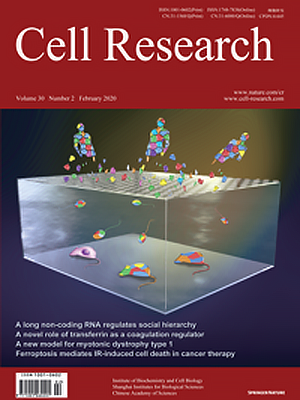
Volume 30, No 2, Feb 2020
ISSN: 1001-0602
EISSN: 1748-7838 2018
impact factor 17.848*
(Clarivate Analytics, 2019)
Volume 30 Issue 2, February 2020: 182-184 | Open Access
LETTERS TO THE EDITOR
Structure–function insights into the initial step of DNA integration by a CRISPR–Cas–Transposon complex
Ning Jia1, Wei Xie1, M. Jason de la Cruz1, Edward T. Eng2 and Dinshaw J. Patel 1
1Structural Biology Program, Memorial Sloan Kettering Cancer Center, New York, NY 10065, USA and 2Simons Electron Microscopy Center, New York Structural Biology Center, New York, NY 10027, USA
Correspondence: Ning Jia (jian@mskcc.org) or Dinshaw J. Patel (pateld@mskcc.org
Dear Editor,
CRISPR (clustered regularly interspaced short palindromic repeats)–Cas (CRISPR-associated genes) surveillance complexes are RNA-based adaptive immune systems employed by prokaryotes against invading nucleic acids from bacteriophages and plasmids.1,2 The CRISPR-derived RNAs (crRNAs) guide the Cas effector complex to target and degrade the invading nucleic acids. Recently, bioinformatics analyses have revealed the presence of CRISPR–Cas loci in bacterial Tn7-like transposons, thereby implicating a functional relationship between RNA-guided DNA targeting and transposition, with the latter representing a new role unrelated to host defense.3 Support for this concept has emerged from recent functional studies on type I-F and type V-K effectors involved in sequence-specific DNA transposition,4,5 thereby significantly broadening the potential biological applications of CRISPR–Cas technology. To complement the available functional studies, our efforts have focused on structural studies of the Vibrio cholerae Tn6677 multi-subunit type I-F CascadecrRNA–TniQ complex, whereby transposition subunit TniQ initiates DNA transposition with the eventual help of other transposition-associated proteins TnsA, TnsB and TnsC in the gene cluster (Fig. 1a).
https://doi.org/10.1038/s41422-019-0272-2
FULL TEXT | PDF
Browse 926


